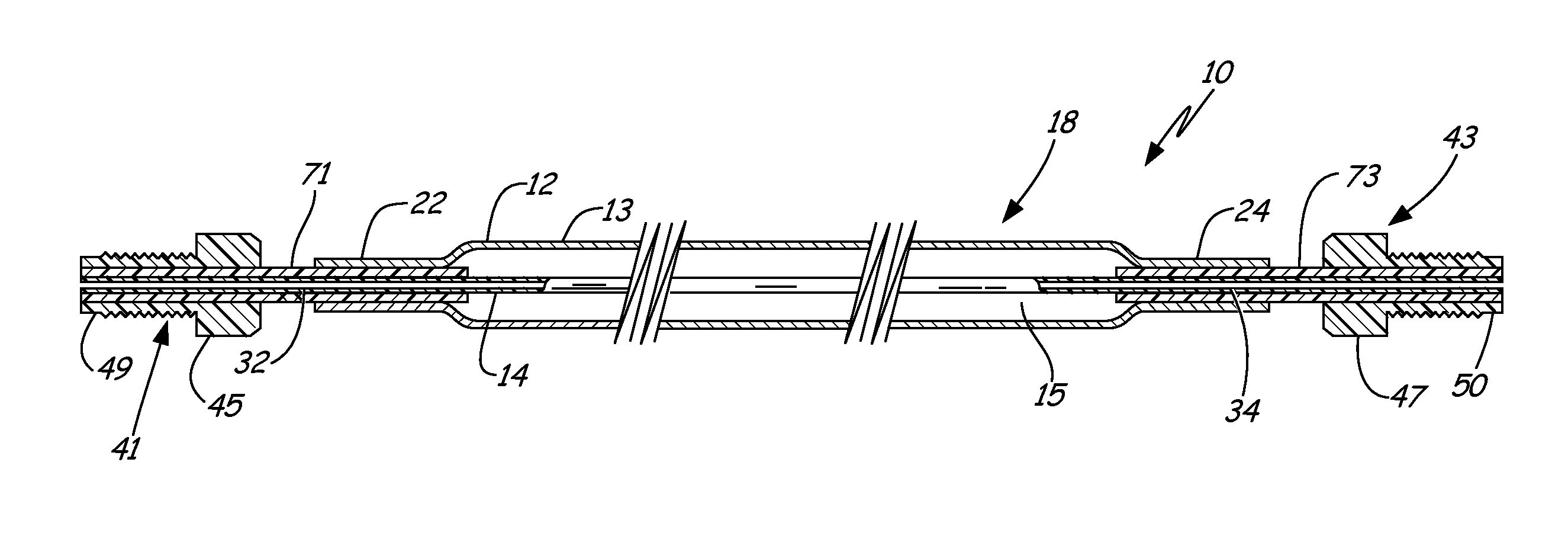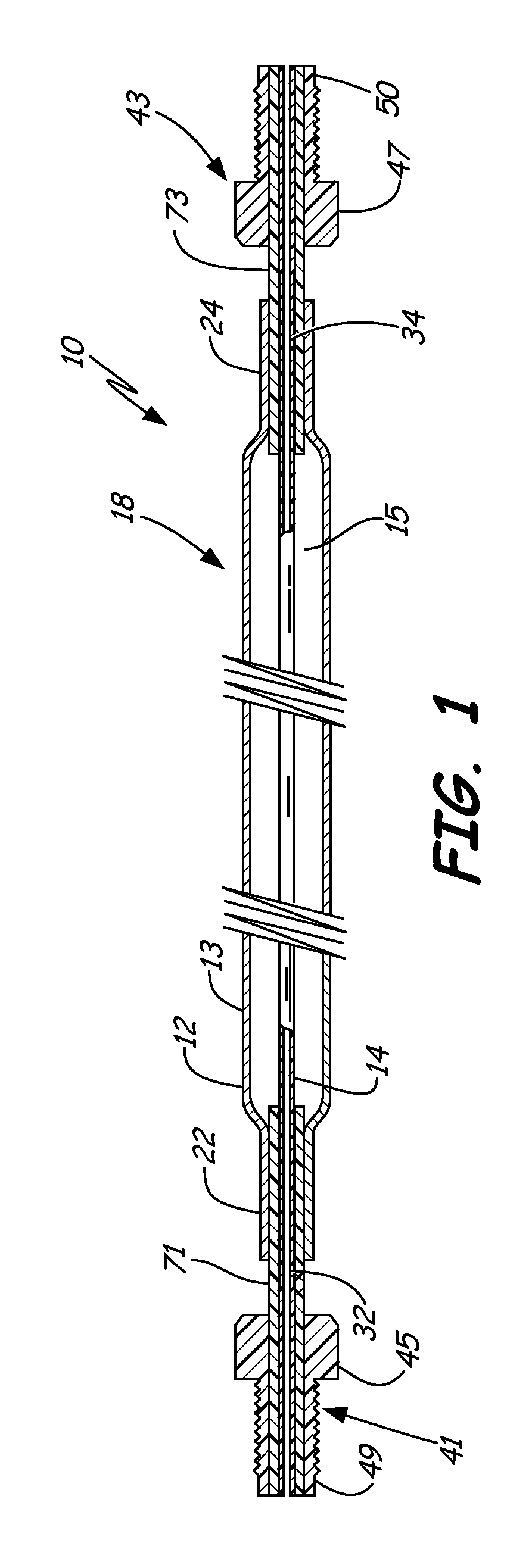Supersaturated Fluid Degassing
a fluid degassing and supersaturated technology, applied in liquid degasification, membranes, separation processes, etc., can solve the problems of uneconomical otherwise feasible use of expensive reagents and techniques, undesirable use of vacuum pumps, and undesirable use of pumping systems directly contacting the reagent pathway, so as to prevent solvent concentrations from building up sufficiently, the effect of minimizing condensation potential
- Summary
- Abstract
- Description
- Claims
- Application Information
AI Technical Summary
Benefits of technology
Problems solved by technology
Method used
Image
Examples
Embodiment Construction
[0026]The objects and advantages enumerated above together with other objects, features and advances represented by the present invention will now be presented in terms of detailed embodiments described with reference to the attached drawing figures which are intended to be representative of various possible configurations of the invention. Other embodiments and aspects of the invention are recognized as being within the grasp of those having ordinary skill in the art.
[0027]With reference now to the drawings, and first to FIG. 1, a flow through fluid treatment apparatus 10 of the present invention includes an outer shell 12 and an inner conveyance member 14 disposed within outer shell 12. In one embodiment, outer shell 12 defines a first chamber 15 therewithin, and through which inner conveyance member 14 extends.
[0028]In the illustrated embodiment, outer shell 12 includes an inlet end 22 and an outlet end 24, with inner conveyance member 14 having a corresponding inlet portion 32 a...
PUM
| Property | Measurement | Unit |
|---|---|---|
| diameter | aaaaa | aaaaa |
| pore sizes | aaaaa | aaaaa |
| pore sizes | aaaaa | aaaaa |
Abstract
Description
Claims
Application Information
 Login to View More
Login to View More - R&D
- Intellectual Property
- Life Sciences
- Materials
- Tech Scout
- Unparalleled Data Quality
- Higher Quality Content
- 60% Fewer Hallucinations
Browse by: Latest US Patents, China's latest patents, Technical Efficacy Thesaurus, Application Domain, Technology Topic, Popular Technical Reports.
© 2025 PatSnap. All rights reserved.Legal|Privacy policy|Modern Slavery Act Transparency Statement|Sitemap|About US| Contact US: help@patsnap.com



